The Beauty of Maine
By Tasha Graff ’07Maine’s beauty is both undeniable and layered. It is a stunning sky, a sweep of beautiful blue, a swath of green. It feels like family and fun and pictures you want to put on your wall. But Maine’s beauty also comes from its ruggedness, its feel of ancientness, even its harshness. Mainers know that it’s this combination that gives our state its true identity, and it is these very people—a mix of our oldest families and our newest neighbors—who give Maine its most beautiful depth.
“People talk of two Maines,” says Nsiona Nguizani, “but there is only one Maine and here we live together.”
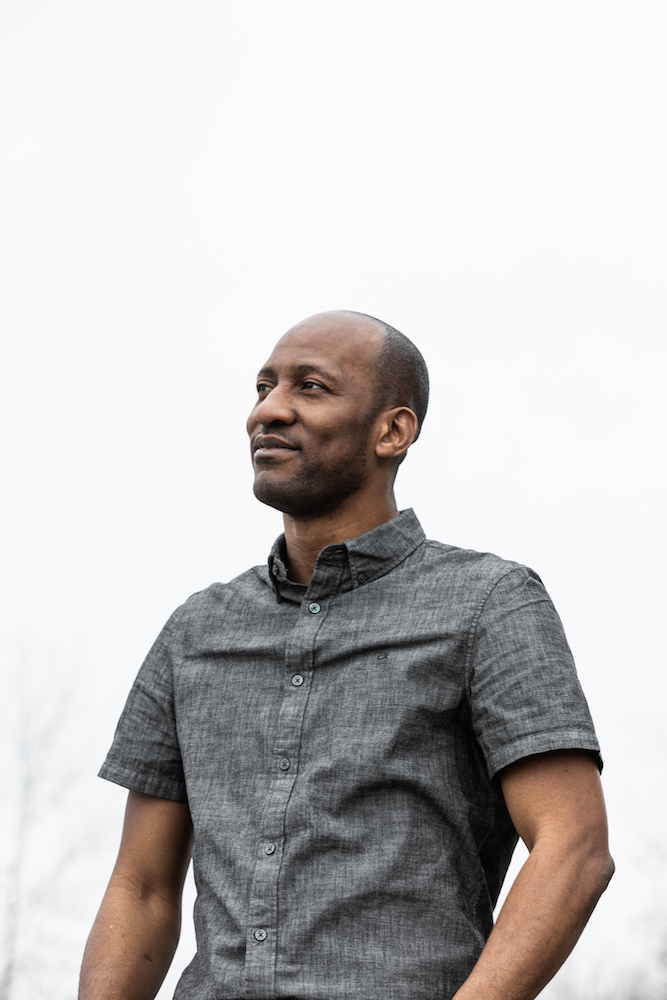
Nsiona Nguizani, cultural broker for Brunswick, came to Maine from Angola.
Since August, Nguizani has been commuting from his home in Westbrook each day for his job as Brunswick’s new cultural broker, responsible for helping and welcoming the town’s eighty newest residents, who arrived in the United States last June, predominantly seeking asylum from Angola and the Democratic Republic of Congo. Nguizani speaks six languages and is the first to hold this multilingual coordinator position.
Nguizani knows firsthand the challenges and opportunities of seeking asylum in Maine; he himself was granted asylum in 2012. Despite earning advanced degrees in his home country, Nguizani had to start his education over in Maine, starting with his GED, and then earning first an associate degree in business from Southern Maine Community College and then a bachelor’s degree in economics from the University of Southern Maine.
Education is a large part of Nguizani’s job. In addition to helping newcomers with paperwork, information, and community-building through volunteers, Nguizani serves as an ambassador of sorts, educating longtime Brunswick residents about what it means to seek asylum.
“Everyone is a bit afraid of the unknown, newcomers and old Mainers. In my job, we’re always trying to work on both sides, for integration for newcomers and inclusion from the Mainers. That’s why I give everyone information; I explain and translate.”
Maine is known nationwide for being one of the whitest and oldest states in the country. According to the latest census report, 95 percent of Maine’s population identified as white; the median age of Mainers was the highest in the nation at 44.2 years old. Such statistics cause some to think of current immigration trends as new to Maine, oblivious to the indigenous and multicultural communities that have existed in Maine for centuries.
“Once you live here, once you get to know people and people get to know you, you understand that Maine is special.”
—Nsiona Nguizani
Historians believe that the first people settled this region about 13,000 years ago. Home to almost twenty tribes, Maine saw its indigenous population drop rapidly after the arrival of European colonists in the sixteenth century, due to war, disease, and loss of territory. Today, the four remaining indigenous tribes in Maine are known collectively as the Wabanaki, or the People of the Dawn.
Maine’s troubled and complicated history with the Wabanaki—specifically the experiences of Wabanaki children who were removed from their homes and placed with white families—was documented through the work of the 2013 Maine Wabanaki-State Child Welfare Truth and Reconciliation Commission, which is now housed in Bowdoin’s Special Collections. The Commission was initiated by the organization REACH (Restoration Engagement Advocacy Change Healing), with the goal to “engage Maine people to acknowledge the full truth of the past, embrace the full truth of the present and commit to creating a just future, no matter what obstacles are in our path.” There are about 8,000 Wabanaki in Maine today, with the majority living on tribal lands.
Since the state’s founding 200 years ago, and across vast changes in technology and economic influences, Maine has relied on native people, newcomers, and immigrants, with academic institutions providing indispensable education for Mainers new and old, and leaders pressing for change and innovation to build the workforce.
“A Laborer's Paradise”
William Widgery Thomas Jr. (Bowdoin Class of 1860) was one such leader. Just two years after graduating from Bowdoin, the Portland native was appointed as American consul to Gothenburg, Sweden, at the age of twenty-three. He quickly learned Swedish and secured passage for Swedish soldiers to travel to America to fight in the Civil War. Over the next decade, Widgery Thomas campaigned to bring more Scandinavians to Maine. He went on a tour of Norway and Sweden, describing the benefits of moving to the United States and described his journey in a report to the Department of State: “One of the chief objects of my expedition was to diffuse knowledge tending towards emigration, and whether driving over the fields, scaling mountains, resting at stations, or coasting along the shore in steamers, I everywhere preached an immigration crusade to the laborer’s paradise in the New World.”
In both his capacity as the Maine Commissioner of Public Lands and the Maine Commissioner of Immigration, Widgery Thomas saw the need and value of bringing immigrants to Maine to bolster the workforce and population. In 1870, he traveled to Sweden in an official role and brought back fifty-one immigrants to found the town of New Sweden in Aroostook County. To this day, New Sweden still celebrates traditional Swedish holidays, as well as Founders Day on July 23, with a current population of 602 people, according to the 2010 census.
While the circumstances and industries have changed over the years, the need for workers in Maine has remained through present day.
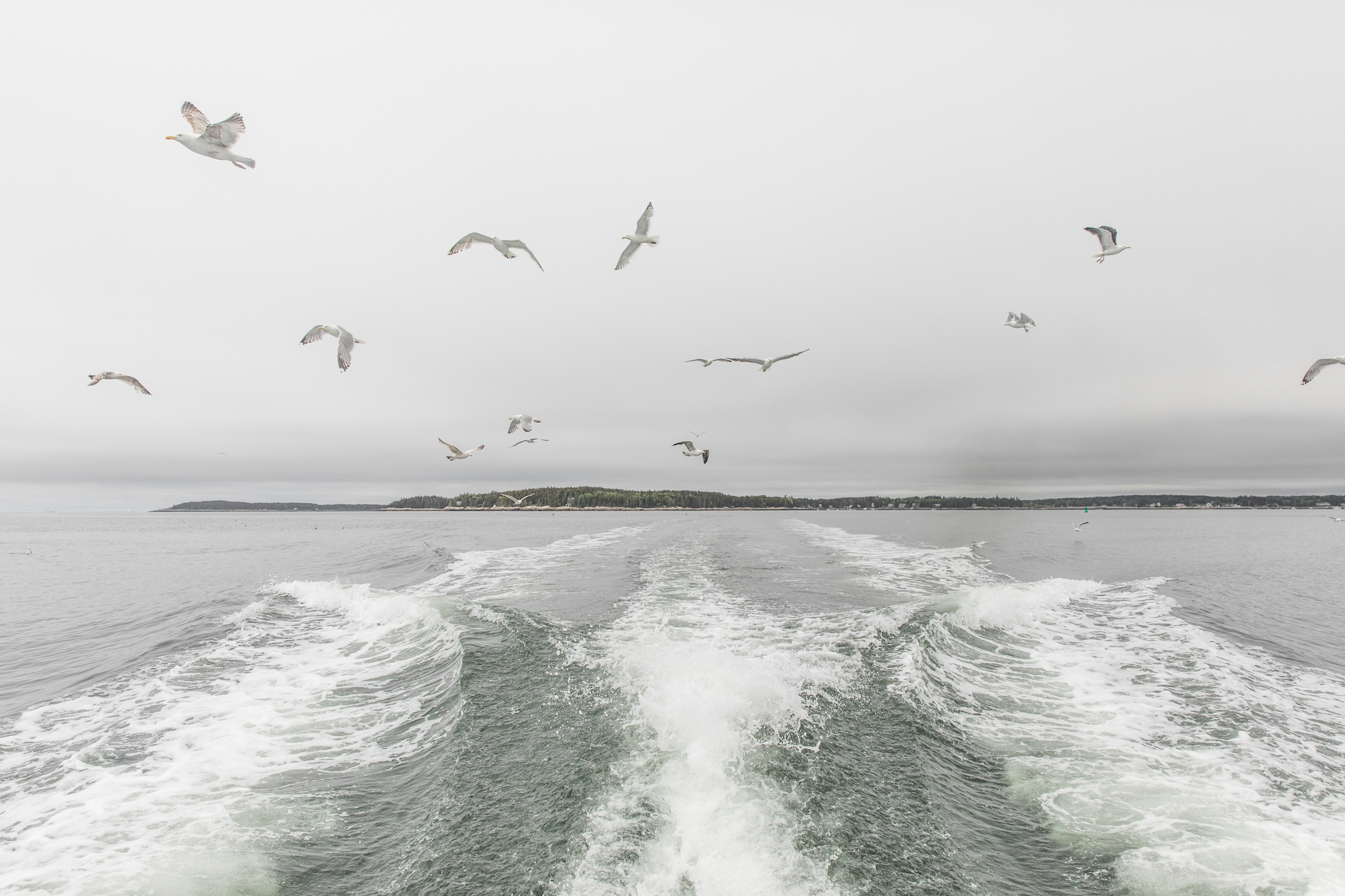
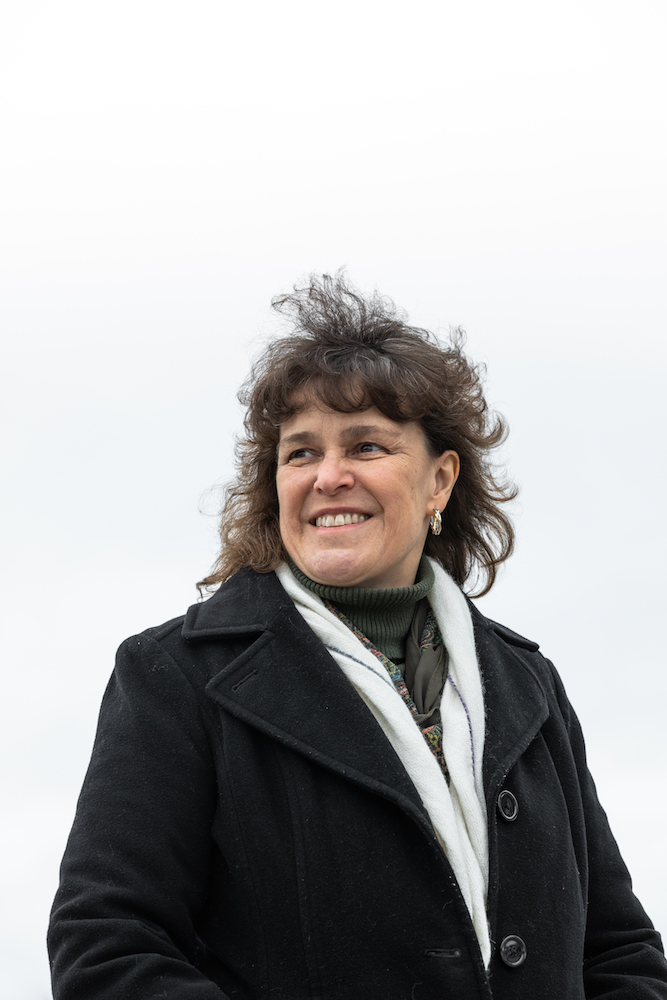
Laurie Lachance ’83 is a lifelong Mainer whose parents came to Maine from Canada.
“We have to figure it out.”
One of Maine’s leading economists, Laurie Lachance ’83, has spent her career analyzing and making projections about the economy. Lachance first worked as an economist for Central Maine Power and later as the Maine State Economist under three governors, across three different political parties—John McKernan (Republican), Angus King (Independent), and John Baldacci (Democrat)—over eleven years. She then worked as the president of the Maine Development Foundation and is now the president of Thomas College in Waterville, where she sees education as the most vital lever for Maine’s economic future.
“I studied Maine’s economy for twenty-nine years and every form of economic development across the state. I grew to realize over my career that we could do every form of economic development under the sun, but in this global knowledge-based, technology-driven economy, if we fail to bring every Maine person to their highest educational potential, we will never, ever achieve prosperity as a state.”
Lachance, a first-generation college student and the daughter of French Canadian immigrants, remembers stories her parents told of being unwelcome when they arrived in Maine. Her ancestors, like many other immigrants throughout the 1800s and 1900s, hoped to find work in the railroad, textile, or paper industry, populating mill towns across the state. “Even though my father owned the local grocery store in town, even though all those mill towns from Augusta to Biddeford to Sanford to Lewiston needed workers, immigrants were greatly discriminated against based on their language and religion. They weren’t included in local organizations.”
Lachance sees Maine’s next century as an opportunity to do better.
“The fact of the matter is, if Maine is to grow and prosper, we absolutely need to welcome and encourage immigrants to come to Maine. This is our future. We can’t possibly have enough babies to make up for our current demographics. But when you factor in the possibility of bringing different groups of people to our state along with encouraging young people to get educated and stay in Maine, that is central to our opportunity to grow, absolutely central to our future prosperity. We have to figure out how to make it work; we just have to.”
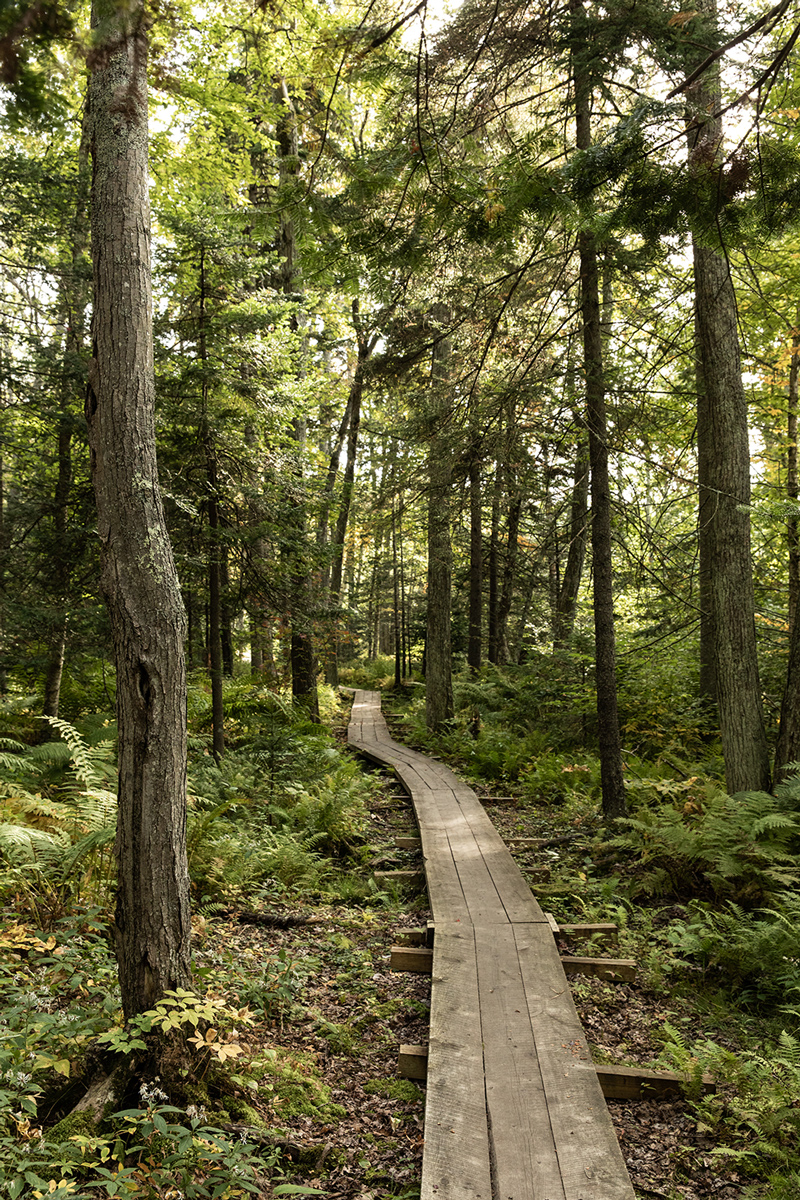
Like Lachance, Carl Leinonen ’77 used his Bowdoin studies in his life’s work as a labor organizer. After double-majoring in economics and government and legal studies, traveling the world on a Watson fellowship, and earning a master’s degree in economics, Leinonen began working for a local affiliate of the Maine State Employees Association, eventually moving up to the state and national level for the Service Employee International Union (SEIU). As more and more of his work became international, Leinonen relocated to Berlin, Germany, four years ago to continue his work with SEIU, though his ties to Maine and hopes to return run deep.
Leinonen notes that Maine has attracted immigrants and retained young people for decades through the booming mill industry but, as the economy evolved and centers of economic activity shifted, so too did the ability to attract labor from Canada, other states, and abroad. “For fifty years now, we’ve seen a net drain on young talent because there are better opportunities in other locations, and that’s a challenge for Maine, especially as our population ages,” says Leinonen. “But what’s interesting in my work is that I see the same challenges in other countries or parts of other countries that have very similar dynamics.” Leinonen believes that Maine has to find a new path, both to keep young Mainers here after they complete degrees and to attract and retain newcomers who enter the education system and workforce.
“The more Maine can welcome immigrants, the more chance we have at creating an economic focal point to keep young people here as well and sustain the economy over a generation,” says Leinonen, using the economic principle of supply and demand. “An influx of people increases demand for local products and services, and this helps stimulate the economy and makes possible new industries. It’s not a coincidence that if you look back at history, those countries that have typically grown very quickly and have significant economies often have a very high level of immigration connected with it. The United States is a prime example of this, and why not Maine now?”
Leinonen hopes to return to the midcoast area in the next few years, where he grew up on his family’s egg farm. “My goal and dream have always been to spend as much time as possible in Maine. It’s where my roots are, my friends and family, my community. It’s home.” He believes encouraging immigrants to feel welcome in Maine is essential: “What we need in Maine’s economy and for its vitality is to embrace all sorts of different people from around the country and the world to make Maine their home.”
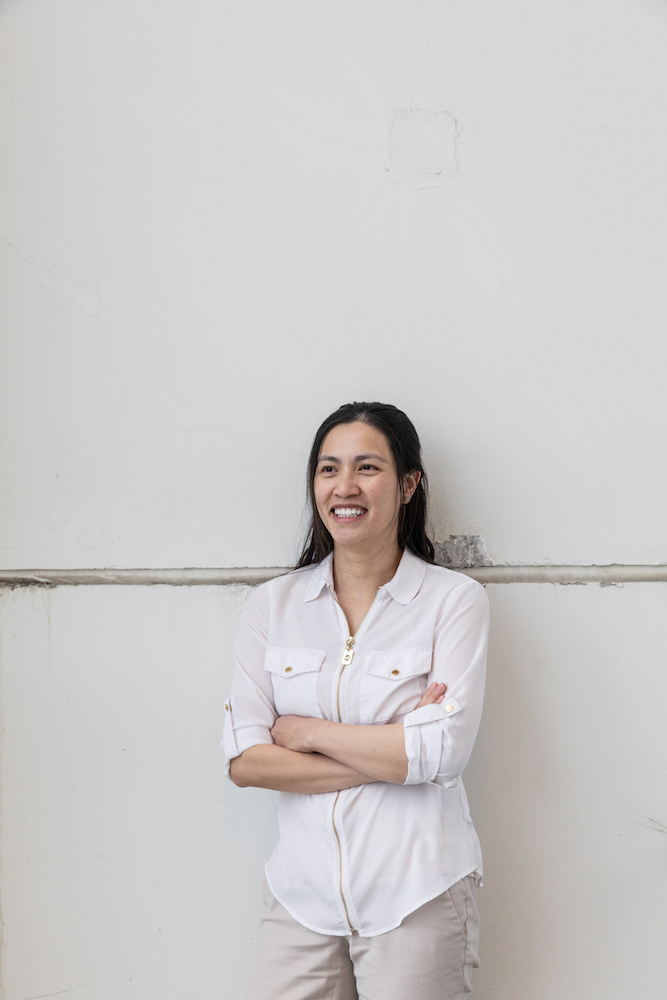
Tho (Huynh) Ngo ’10 came to Maine from Vietnam.
Making a Home
When Tho (Huynh) Ngo ’10 was six years old, she moved to Maine from Vietnam with her parents and siblings. “A lot of people we know say, ‘Why did you move to Maine? It’s so cold!’ But this is where we were sponsored, and it became the home we love.”
Ngo attended Portland Public Schools and credits her parents for instilling in her the value of higher education. “They didn’t tell us what to do for work, but college was always the goal. They showed us how to work hard because they wanted better for us. That’s all we knew and that’s what they worked for, to provide us with a life that had more privilege and opportunity.”
Ngo majored in biology at Bowdoin and didn’t think twice about staying in Maine after graduation. She immediately got a job in the health care field, where she spent the next nine years of her career, before being recruited by Unum last year to work as a program manager in information technology. “When we came to America, the state helped with housing and health care, and people helped us navigate a new language and system. This not only made Maine our home, but also made it a place where I want to work, especially with the aging population. I want to give back.”
Unum, which provides group and individual disability benefits across the country, is one of Maine’s largest employers, with about 3,500 employees. One of the challenges facing Unum and other major employers in the state is the cost of health care, which indexes steeply with age.
Mike Simonds ’96, president and CEO of Unum US—where he started as a temporary administrative assistant while a student at Bowdoin—sees the shifting demographics of Maine as an opportunity. “Finding smart ways to encourage folks that have all different backgrounds and experiences to move here or stay here is a big part of where we need to go.
“We place a high value [on] and take great pride in offering robust health care for our employees,” says Simonds, “but the cost associated with that impacts our competitiveness as a business. We need young people in our state, we need young people born here to stay, and we need young people to move here and want to stay.”
Simonds, like Lachance, has hope for the state. “I am very optimistic. Our education system is key, from the Maine public schools that I attended, to community colleges, as well as private colleges like Bowdoin. We are lucky in this state to be able to prepare for the future through education. We need and want people to fall in love with Maine. We want them to stay and make their lives here.”
For Ngo, living in Maine is about community and being near family. “My parents had really physically demanding and challenging jobs their whole lives—not like me sitting in front of a computer—and I wanted to make sure I was here to support their health needs.”
Ngo and her husband live in Windham and appreciate the pace of life that Maine allows as they raise their two young children. “We can work hard but still enjoy the seasons and that rich, local feel. I can go to Two Fat Cats to get our favorite blueberry pie or to Standard Bakery to get my mom’s favorite baguette,” says Ngo.
“We call ourselves Mainers, and sometimes people correct us saying you have to be born here. My husband gets mad and says, ‘Being a Mainer is about your heart, not where you were born.’ Our children are Mainers, no question, but we are, too.”
—Tho (Huynh) Ngo ’10
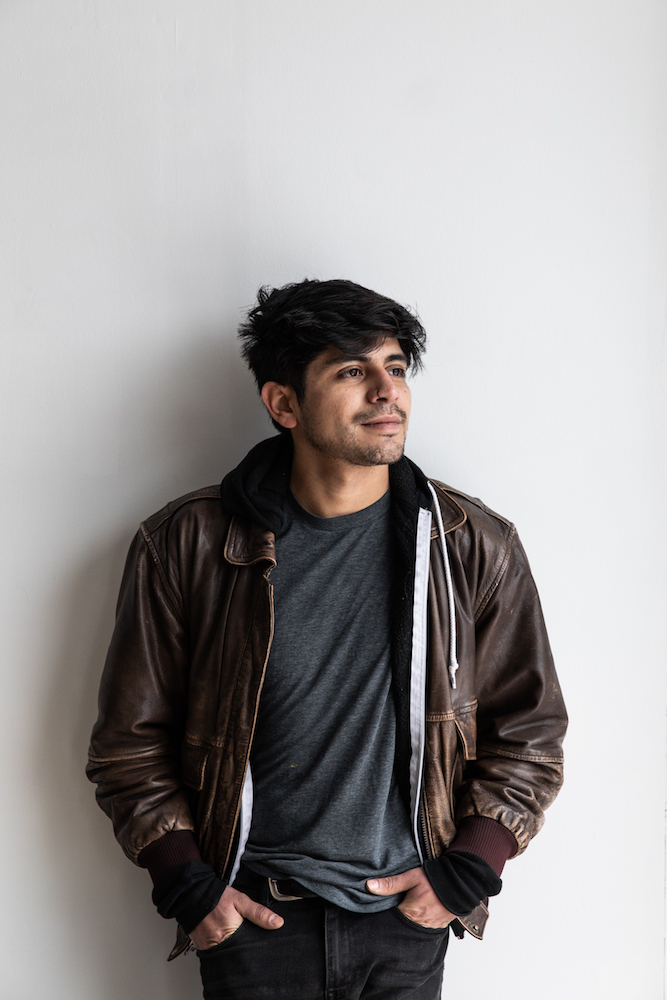
Hector Magaña ’16 came to Maine from San Diego, California.
Deciding to Stay
Hector Magaña ’16 grew up in East Palo Alto, California, and had a list of eighteen colleges he was planning to apply to, but Bowdoin wasn’t on the list. “What could possibly be in Maine?” he asked, when he was pulled out of study hall to meet with a Bowdoin representative. A few weeks later, then Dean of Admissions Scott Meiklejohn came to talk at the school and Magaña was sold: “It was a chance to try something new, to truly be away from home, and have an opportunity to rise above some of the struggles of my community.” Magaña, who majored in visual arts and specializes in photography, quickly fell in love with the beauty of Maine, despite the difficulties of being so far away from home and in a much less diverse community.
“When I arrived,” says Magaña, “Maine was unlike anything I had ever seen. Sometimes it got to me, being the only person of color in a room. I felt misunderstood at times and I missed my home, my family, the cuisine, and the music. It took time to understand the culture of the Northeast and to not feel like an outcast or an outsider. But at Bowdoin, I found friends who became family.”
Magaña, whose favorite subjects were math and science in high school, planned on majoring in physics but registered for an art class his sophomore year. “I took a photo course with Mike Kolster, and my life changed. I met these friends who were destined to be artists, and we stuck together and stayed here after graduation.”
A week before graduation, Magaña and four of his 2016 classmates—Cody Stack, Henry Austin, Wilder Nicholson, and Noah Fardon—rented an apartment and an old laundromat-turned-studio-space in Portland.
“Above all, space is precious, and we knew we wanted to make art,” Magaña says. The artist collective, New System Exhibitions, is now entering its fourth year and has grown from five friends sharing space to an official multiuse space with arts-centered programming and a gallery.
“Part of me knew I wanted to stay in Maine from when I first arrived for Orientation, and part of it was a process of letting it happen. I knew that Portland had something to offer that my home didn’t. Portland is a special place. It’s my base for incubating ideas and art. There’s an informality in the art scene here that is welcoming to all different kinds of people and allows for creativity. The demographics are changing, and it’s an accepting place. That’s why I’m here.”
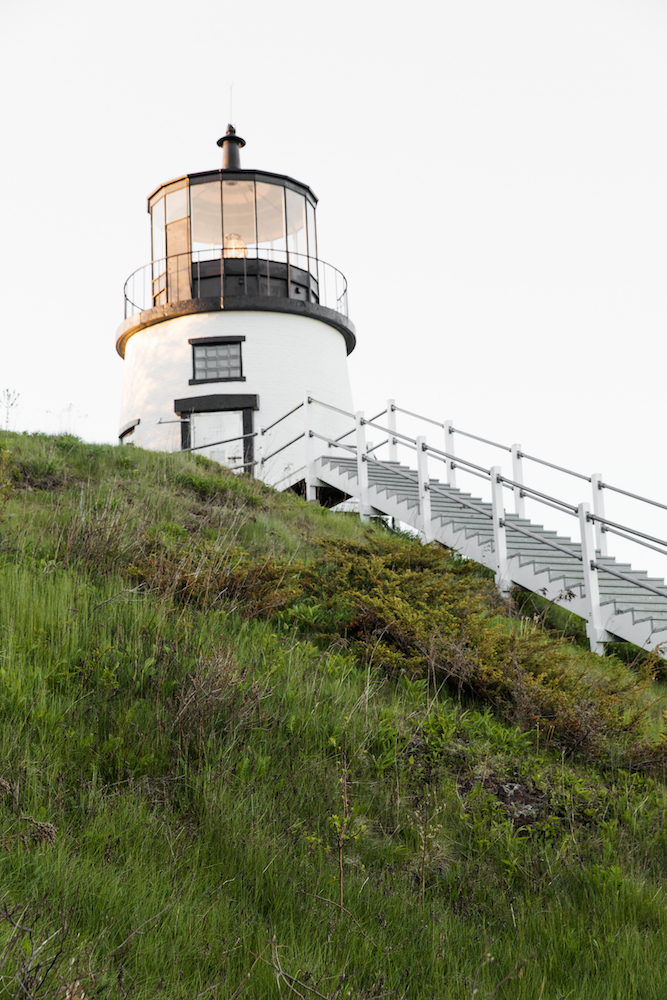
Owls Head Lighthouse
The Beauty of Maine
“People come to Maine for different reasons. Sometimes they have a choice; sometimes they do not,” says Nguizani. “But once you live here, once you get to know people and people get to know you, you understand that Maine is special. I want to help keep it special for old Mainers and newcomers.”
Nguizani relies on volunteers from the Brunswick community and Bowdoin to help his work. “I have a list of 180 volunteers, people willing to help. It is not the money here in Maine. It’s the people. Every time I ask for help, people respond. The people in Brunswick respond. For every five people we ask, at least two people say, ‘Yes, I can do that. What do you need?’ You cannot put a price on that. You cannot put a label that some politician might use for their cause or say it’s about laws or taxes or money. It’s about the hearts of people, the people willing to help.”
Sarah Seames, director of the McKeen Center for the Common Good, fosters community collaboration with a range of volunteer projects for Bowdoin students, faculty, and staff. The McKeen Center, opened in 2008, was named in honor of Bowdoin President Joseph McKeen, whose inaugural address in 1802 stated that “literary institutions are founded and endowed for the common good, and not for the private advantage of those who resort to them for education.”
Bowdoin students have volunteered to work with new Mainers in Portland for many years through programs at Portland Adult Education and Portland Housing Authority. The influx of new Mainers to Brunswick this summer has shifted the focus of certain programs more locally. “We’ve set the groundwork to start recruiting students for the spring semester to assist with English tutoring, childcare while parents are tutored in English, English conversation groups, and translating materials for the Brunswick school system,” says Seames, who is mindful of the care and thoughtfulness needed to approach the work. “We’ve moved slowly on this new work in Brunswick to make sure we are placing volunteers appropriately and not imposing on new community members as they transition here.”
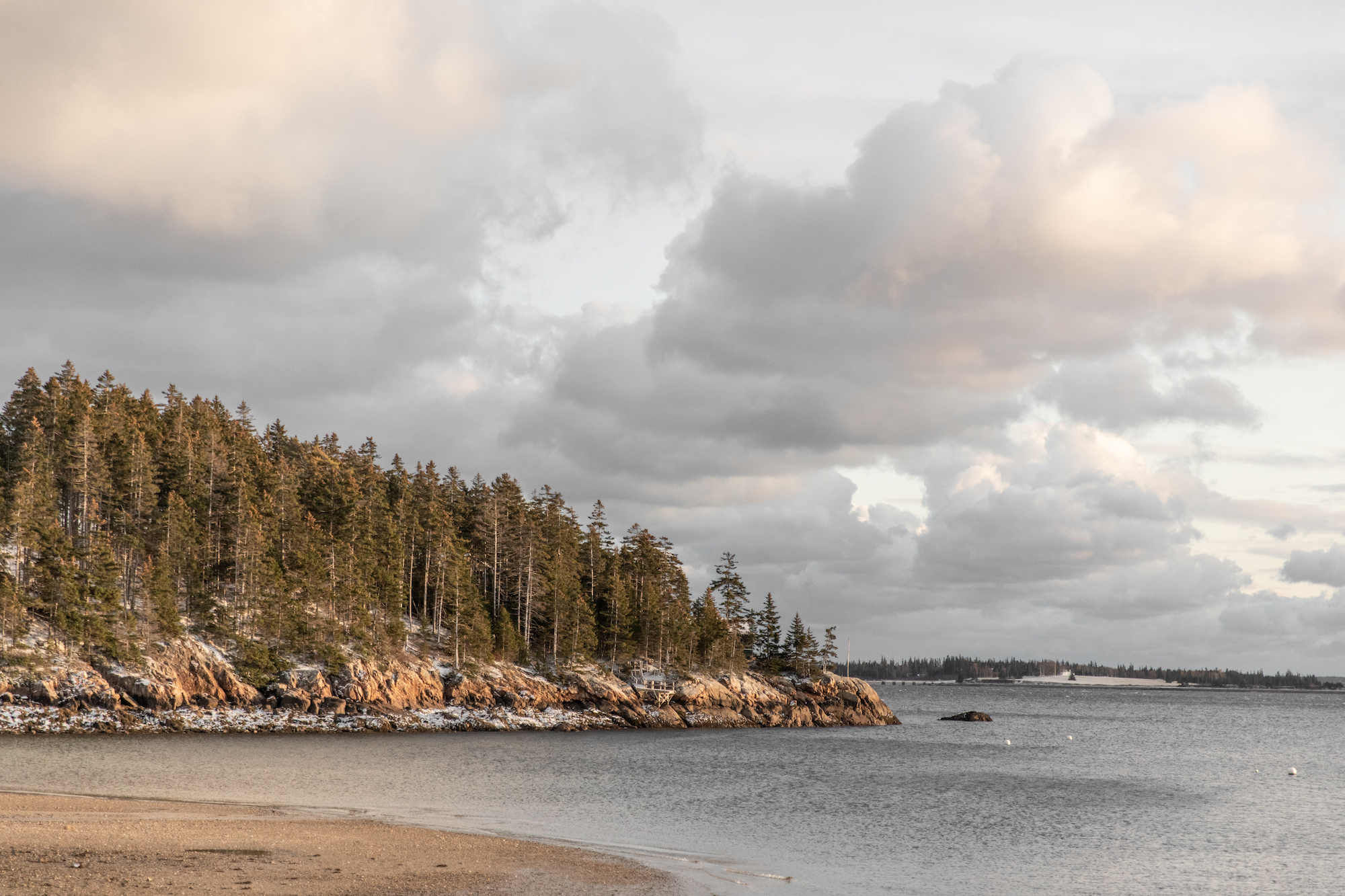
Lachance sees this type of work as essential to Maine’s future. “To the extent that places like Bowdoin, in coordination with the state, can welcome, educate, and help give all people, regardless of where they come from, the opportunity to thrive, that’s the openheartedness and open spirit we need for our future.”
Nguizani doesn’t have a roadmap for the future, but he does have a goal: to help people find common good and common ground.
“I tell people, ‘Just the fact that you were born, the world will never be the same.’ I tell people that they can make a difference because of the fact that they were born. You have changed someone’s life—your mom, your dad, a sibling—just for being born. Imagine the difference you can make for being on this earth. Now a new Mainer has arrived in Brunswick and lives are changed. We cannot go back. Lives have changed, and so we try to accommodate, by compromising, by sacrificing, by telling stories, to be together. That is common for all of us.”
He, like so many Mainers, from Brunswick to Dover-Foxcroft to New Sweden, sees hope in cultivating community. “The beauty of Brunswick—or better—of Maine, is not general assistance. It is not the weather. It is the people,” says Nguizani, before pausing for a moment.
“I will say it again, so I am sure you understand. The beauty of Maine is the people—all people, all Mainers.”
Tasha Graff ’07 is a poet and essayist and teaches English at South Portland High School in South Portland, Maine. Read more of her work at tashagraff.com.
Greta Rybus is a freelance photojournalist based in Portland, Maine. Find her work at gretarybus.com.
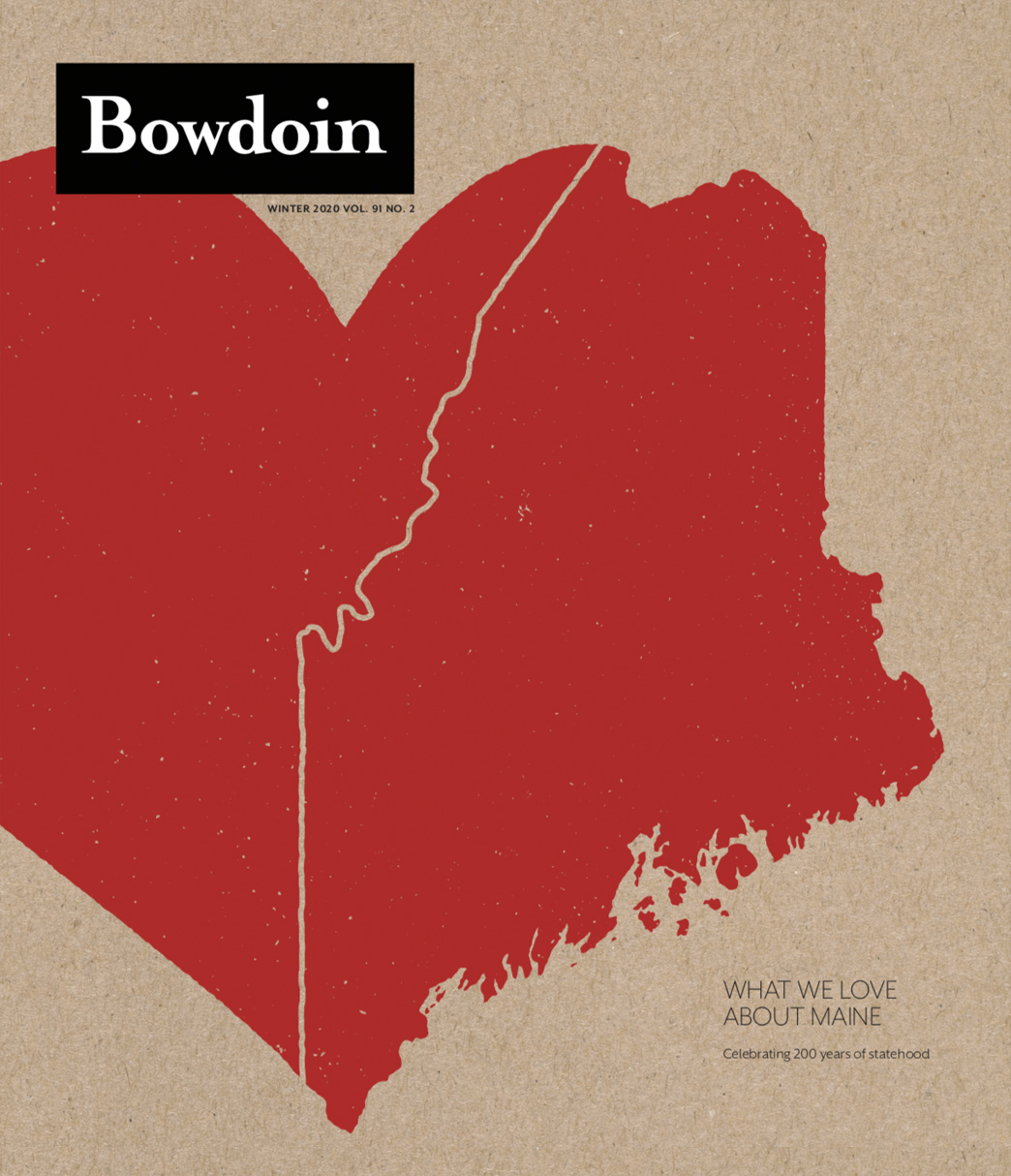
This story first appeared in the Winter 2020 issue of Bowdoin Magazine. Manage your subscription and see other stories from the magazine on the Bowdoin Magazine website.